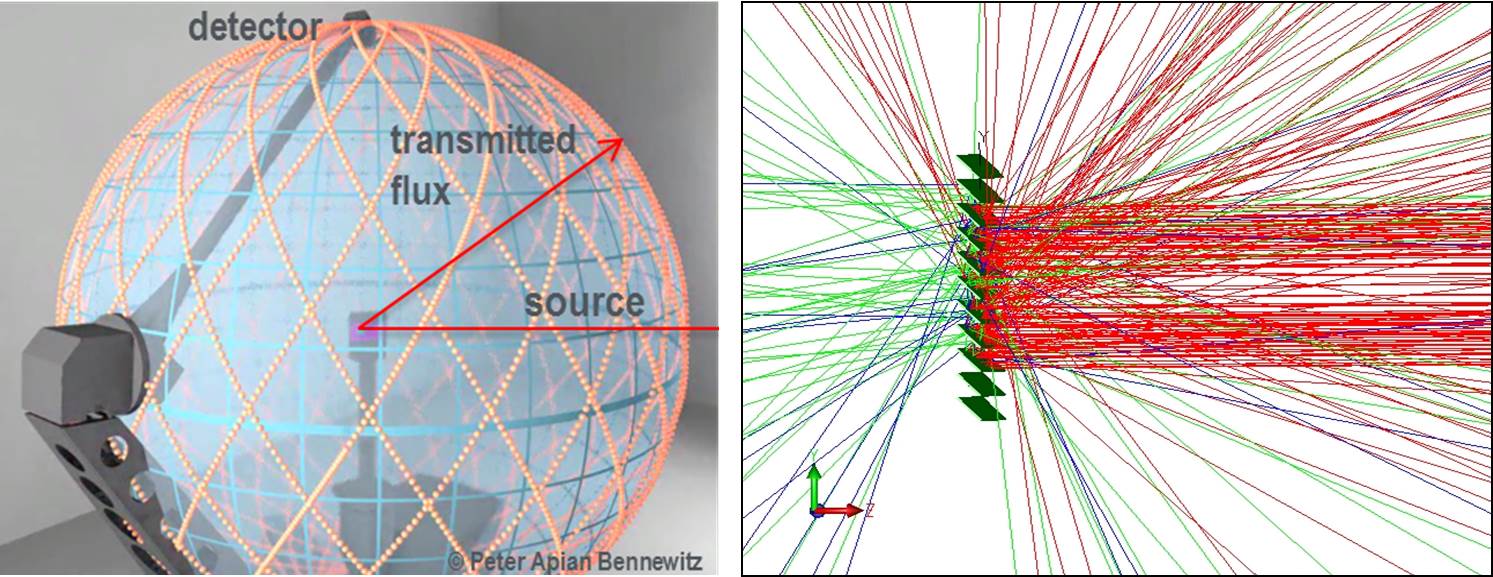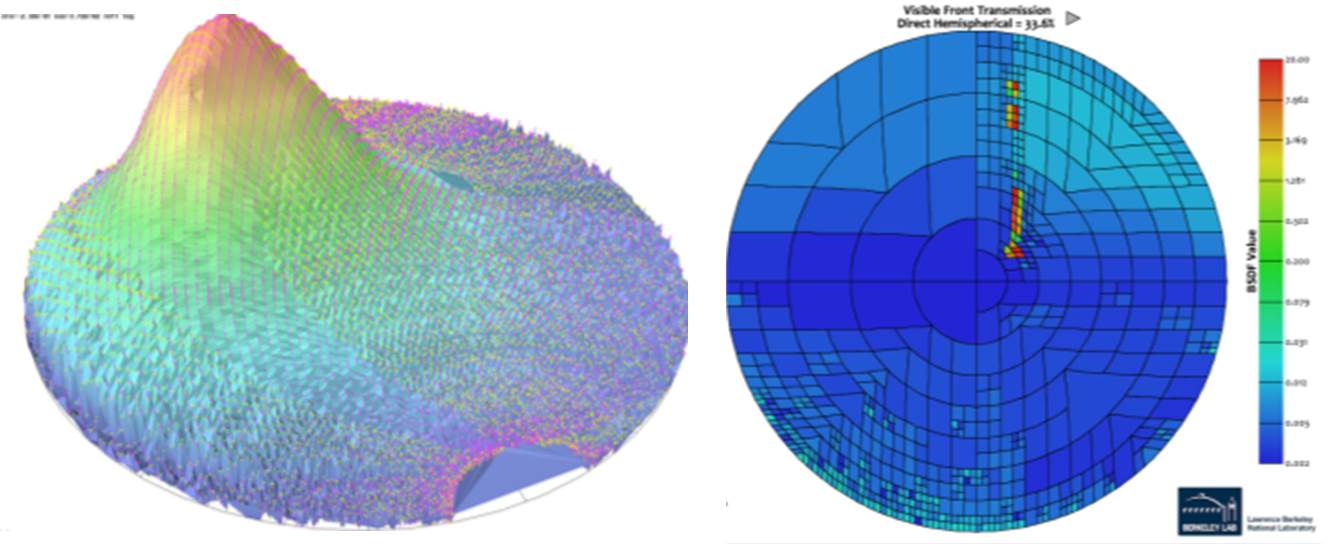Measuring Optically Complex Fenestration Systems
Most daylighting and shading systems are “optically complex” in that incident light is not transmitted specularly (in the same direction as the incident light) like transparent glass. Light is scattered: transmitting in some directions and reflecting in others; the pattern of scattering differs as the angle of incident light changes. LBNL researchers are establishing protocols for measuring and characterizing the light-scattering properties of these systems.

LBNL’s large-scale goniophotometer (left) is used to measure the bidirectional optical properties of relatively large (e.g., 10 x 10 inch) samples of light-scattering fenestration materials. Parallel light is projected from source (red rays in the right hand image), scattered by the sample (green and blue rays), and measured by the detector mounted on the robotic arm, which rotates in a spherical pattern around the sample in the center. Image (left): Peter Apian Bennewitz, pab advanced technologies Ltd.

In order to save time, goniophotometric data are taken for a limited number of incident angles. Bidirectional solar-optical data for any arbitrary incoming and outgoing direction are then generated using the measured data with interpolation models (left). Data are stored using a variable-resolution format so that peaks are captured with sufficient accuracy.



